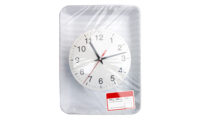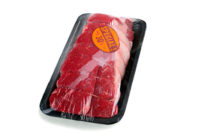Without dwelling much on the past, it progressed from shrink bags to case-ready and vacuum skin to flex/flex and other formats all the while delivering extended freshness life for an expanding lineup of protein applications. Today it continues that winning streak.
At first there was just a handful of barrier film suppliers because groundbreaking innovation requires financial resources and considerable skill. After the pioneers validated the concept and created a preliminary portfolio of barrier options the inevitable happened. Less costly knockoffs began filtering into the marketplace. With the hard work done, hurdles to market entry weren’t so daunting. As an executive remarked about today’s barrier technology, “It’s ubiquitous, right? It’s everywhere, so by default if it’s everywhere it’s commoditized.”
I can’t comment on commodity status, and it’s not my point. But undeniably there are tons of barrier film options and formats for protein brand owners to choose from. If you have an application, the film suppliers have got you covered. So, what’s driving market relevance?
Surprisingly, it’s not sexy, whiz-bang science, but basic blocking and tackling, according to one veteran source. “Processors value reliability, meaning how a film runs, and that it provides the needed shelf life consistently. They want it to come in and run on their machines, without adjustments, at a fair price.” He goes on to say that they want a buffer in their shelf life in case of unforeseen delays in the supply chain. “If they’re putting 28 days on a pack, they’d love 35.”
Interestingly, in some cases the extra shelf life can be more significant than just widening the distribution and retail sales windows, giving those who can deliver consistently a leg up. The source recounted a circumstance where a processor went from 28 days to 40 days of distribution life after testing a new film. “They decided to keep the 28 days on the pack because at the end of that time their product looked better and tasted better in the stronger barrier format. It made for a better customer experience.” For shoppers, there may even have been some visible difference between the product and competitors alongside in the display case as they approached the sell-by dates.
This doesn’t mean that focusing on basic deliverables is the sole route to differentiation. Film makers are still willing to invest in innovation. “Everyone’s searching for new markets, and they may require different performance specs and might need some tailoring or tweaking. They’re also looking to improve yields, and I guess thirdly would be a recyclable option.”
For protein packaging and the packaging segment in general, environmental stewardship is, arguably, a top concern for every link in the industry’s supply chain. “The sustainable genie is out of the bottle,” exclaims the executive. “Having a barrier material which would provide sufficient shelf life, moisture resistance, oxygen transmission rate and has a recyclable footprint or opportunity to it is something that would be of keen interest.”
If necessity truly is the mother of invention, the great need or perhaps new frontier of barrier film technology seems clear. This isn’t news to anyone. Most likely the science, while requiring effort and skill, is doable. Making the subsequent economics acceptable to all the stakeholders may be the more difficult task. But that’s a discussion for another day.





Report Abusive Comment